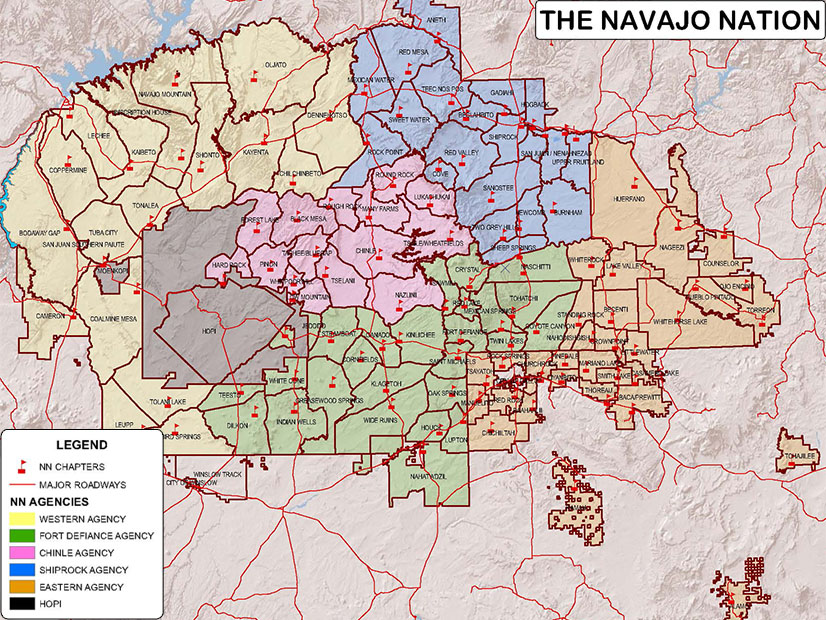CAISO on Feb. 8 released its final draft proposal out of its Interconnection Process Enhancements (IPE), its initiative to address the “unprecedented and unsustainable interconnection request volumes” submitted in the current and prior study windows.
The draft refines the initial IPE straw proposal released Sept. 21, 2023. Among the changes are the development of a generic timeline expected to align with FERC Order 2023 requirements, tweaks to the implementation of the zonal approach and more detail on how to fulfill the 150% planned transmission capacity within each zone.
“I just want to emphasize [that] the process we have right now is not working and will not get us to a reliable system,” Danielle Mills, principal of infrastructure policy development at CAISO, said at an IPE working group meeting Feb. 15. “So, we need fundamental change, and I know it’s a little scary, but we need to just all link arms and jump in together.”
Mills emphasized that the IPE initiative is part of a broader set of changes designed to onboard new resources quickly and cost-effectively to meet California’s decarbonization goals. As part of the process, the ISO signed a joint memorandum of understanding with the California Public Utilities Commission and Energy Commission in December 2022 to establish a general direction.
The goal of the initiative is to prioritize interconnection requests aligned with priority zones, called the “zonal approach,” where transmission capacity exists or is approved for development. Entities seeking to interconnect must go through a process in which they will receive a score based on project readiness that determines if they can enter the queue.
Because of such high rates of interconnection requests (in 2023, Cluster 15 set a record at 541 requests), the ISO also asked for FERC approval to cancel the 2024 interconnection window to give it more time to study current requests, as well as to continue to refine the draft proposal. (See CAISO Seeks FERC’s OK to Shut 2024 Interconnection Window.)
Data Transparency
In previous working group meetings, stakeholders emphasized the need for more information about where priority zones are located.
In the draft proposal, the ISO identified that it would consolidate relevant information into a single document that provides line diagrams of interconnection areas and points of interconnection, identifies transmission constraints, and gives a list of substations within each zone and the transmission plan deliverability allocated for each constraint.
Per Order 2023, heat maps will be available 30 days after a cluster study and 30 days after the restudy. The ISO is developing a heat map for Cluster 14, though it likely won’t be available 30 days after the cluster’s phase 2 reports are issued because Order 2023 applies to only Cluster 15 and beyond.
Timeline Concerns
CAISO is seeking to implement its interconnection reforms — both its IPE proposal and Order 2023 compliance filing — at once.
ISO staff plan to file the compliance proposal in April, though they are not sure when FERC will act upon it. Jeff Billinton, director of transmission infrastructure planning at the ISO, said because of that uncertainty, staff don’t expect to re-engage with Cluster 15 until the first half of 2025. Order 2023 compliance will have a negligible impact on clusters prior to 15, the IPE draft states.
Stakeholders expressed concern over the intent to move forward with IPE changes while waiting on FERC’s approval, especially regarding site-control requirements.
“There’s uncertainty about … your idea that there’s a certain timeline for re-engagement with Cluster 15,” said Jason Burwen, vice president of policy and strategy at GridStor. “Folks are going out to get site control, sign lease options and whatnot. As the timeline of uncertainty moves forward … folks are hanging on to land for even longer than they anticipated.” He asked if the ISO could make a definitive statement about site-control requirement timelines.
Billinton responded that the timeline shouldn’t be too troublesome for entities seeking site control and interconnection in the Cluster 15 window.
“The outermost deadline for having site control really is the commencement of the cluster study, which would be only, I don’t know, a few months after we re-engage with Cluster 15 and go through the validation process,” Billinton said.
Chris Devon, director of energy market policy with Terra-Gen, asked if there was any chance FERC could move fast enough to expedite the timeline.
“It is our intent to beg FERC for an order as fast as possible,” Billinton said.
